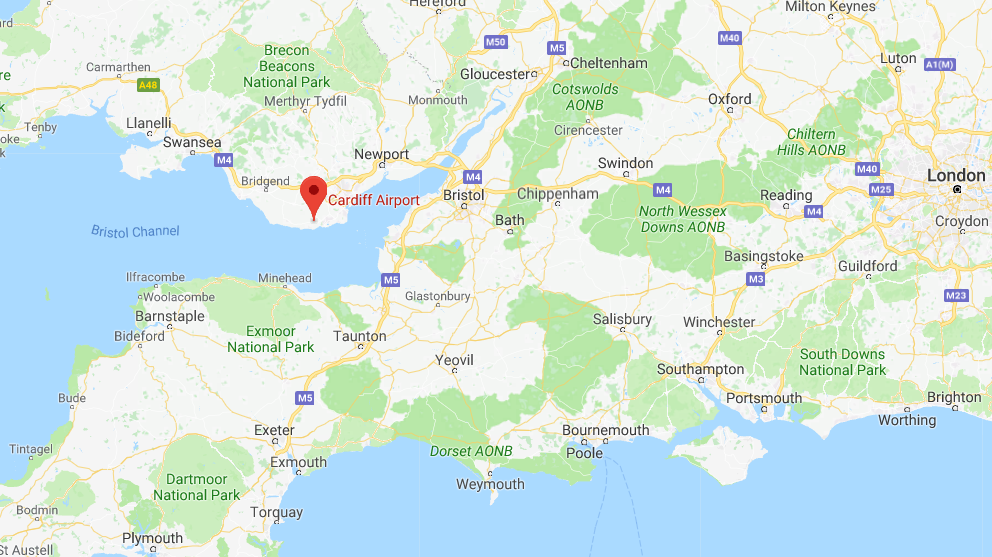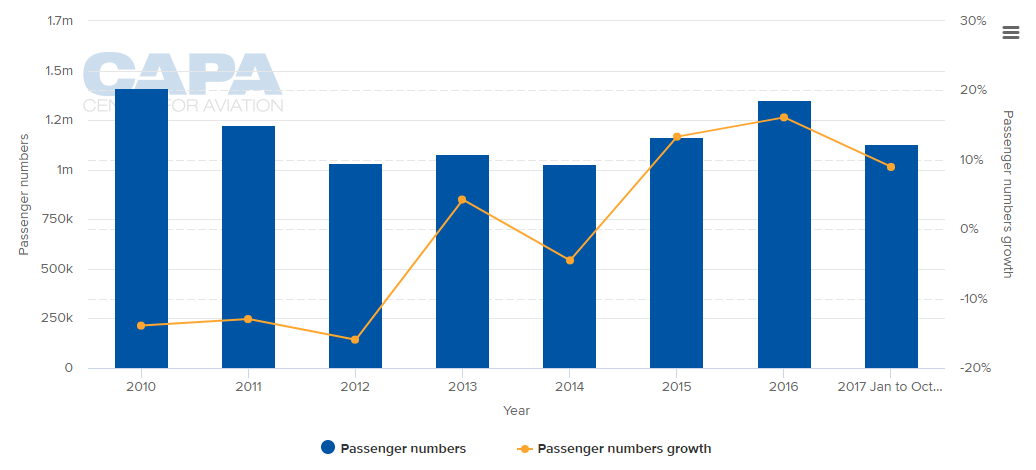On the face of it that looks a little unambitious. The route will be the only one connecting large swathes not only of Wales but also of south-west England, with the Middle East and beyond. At the same time there is no obvious economic connection between Wales and Qatar. The raison d'être for the flight seems to be the 1.4 million passengers from the unspecified 'region' who fly to the Middle East each year, 90% of whom do so from London.
Cardiff Airport presently has no routes outside of the UK and Europe. Then again, neither does the neighbouring and much larger Bristol Airport, with the exception of a vacation service to Cape Verde. Residents of a wide area have to travel as far as London or Birmingham (Emirates Airline and Qatar Airways) to access flights to the Middle East hubs. There are no intercontinental services at all from Southampton, Bournemouth, Exeter and Newquay airports.
MAP - Cardiff Airport will hope to pull on the significant catchment of long haul eastbound passengers that currently generally fly via Birmingham or London Source: Goggle Maps
Source: Goggle Maps
In the case of Bristol, and Bath in particular, the area is one of the strongest in the UK outside London in science, aerospace, finance and creative media.
Accessibility has improved at Cardiff Airport. The two River Severn bridge crossings together with a rail tunnel ensure that it is connected directly to England though it still misses a final link in the rail network into the airport, one that is unlikely to materialise while passenger numbers remain low. Realistically, you need 10 million air passengers a year to justify a rail link.
On the other hand a rail link is something Bristol Airport cannot boast either though it is likely to get one sooner than Cardiff, which is another reason why the Doha flight is quite an acquisition for Cardiff.
Cardiff Airport is recovering quickly from a very lean spell a few years ago, a period in which, like Liverpool, Durham Tees Valley and several other British airports, questions were asked about whether it could even survive. Once owned by Abertis, whose subsidiary TBI was a Cardiff-based real estate business, the airport was sold to the Welsh Government in 2013 for GBP52 million, which continues to operate it "at arm's length" even though its intention was to acquire it only to ensure that it remained open before selling it on again.
Traffic has increased markedly following the general upturn in business in the aviation industry. Though still far off its 2007 high of 2.1 million passengers, it is back to 1.3 million (2016). Traffic grew for the first time in four years in 2013, the year of the sale, and thence by 13.3% in 2015 and 16.1% in 2016. Growth in the period Jan to Oct-2017 was 9%.
CHART - After dipping back to just over one million annual passengers in 2014, double-digit growth in 2015 and 2016 and +9.0 for the first ten months of 2017 will bring a decade high traffic performance for 2017 and close to 1.5 million annual passengers Source: CAPA - Centre for Aviation and OAG
Source: CAPA - Centre for Aviation and OAG
The largest airline by seat capacity is Flybe though there is a significant presence from KLM with its Amsterdam connection, one that could be impacted by the Doha service. The presence of LCCs (Vueling, Ryanair) is slight for a UK regional secondary level airport. The extra 1.4 million passengers this new service could theoretically attract would double the present annual total and bring a significant boost to the local economy.